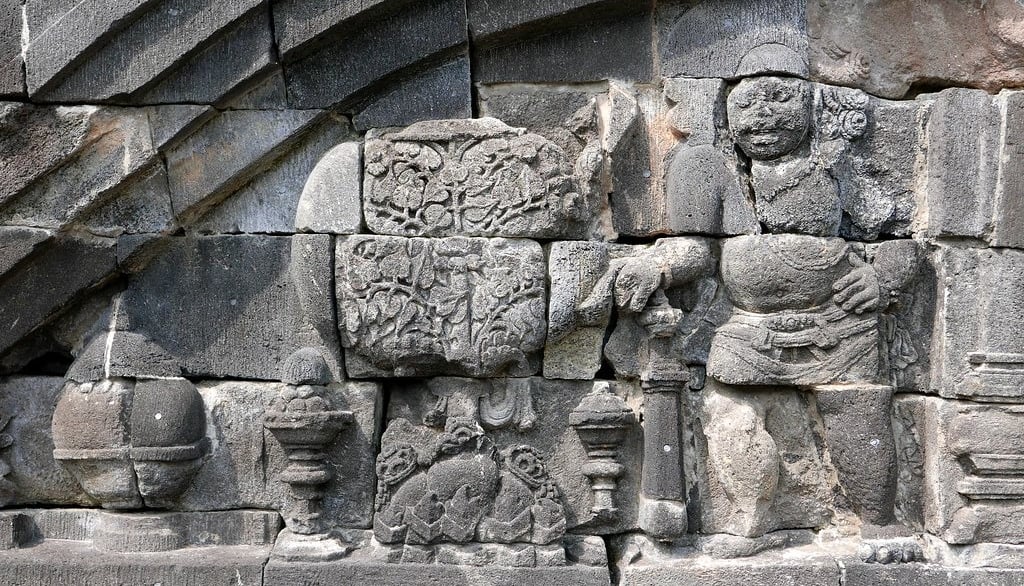Our guides speak English and German, Spanish, Dutch, France, Italian, Russian, Japanese, Arabic on request!
Candi Sewu: Exploring Indonesia’s Ancient Buddhist Masterpiece Near Prambanan
Candi Sewu is one of Central Java’s most extraordinary historical treasures. Located just north of Mount Merapi and only a short walk from the famous Prambanan Temple, this ancient Buddhist complex offers an incredible journey into Indonesia’s early civilization, religious harmony, and architectural brilliance. As the second-largest Buddhist temple complex in Indonesia, Candi Sewu continues to amaze travelers with its massive scale, mysterious history, and spiritual atmosphere.
SIGHTSEEING
Iwan Kur Kurniawan
11/25/20252 min read


The History of Candi Sewu: Older Than Borobudur and Prambanan
Many visitors are astonished to discover that Candi Sewu predates both Borobudur and Prambanan, which are two of Indonesia’s most renowned temples. Historical inscriptions, such as the Kelurak Inscription (782 AD) and the Manjusri Graha Inscription (792 AD), indicate that the temple’s original designation was Prasada Vajrasana Manjusri Graha, translating to "the Vajra Throne of Manjusri."
Candi Sewu was constructed during the rule of Rakai Panangkaran, the second monarch of the Sanjaya dynasty. Despite his Hindu lineage, Panangkaran accepted Mahayana Buddhism and built this magnificent sanctuary dedicated to the Bodhisattva Manjusri. Subsequent rulers, including Rakai Panaraban and Rakai Pikatan, expanded and renovated the site.
The early coexistence of Buddhist and Hindu temples, with Candi Sewu alongside the Hindu Prambanan complex, showcases the extraordinary religious harmony in ancient Java. Communities practiced Buddhism and Hinduism freely, creating a culturally diverse landscape characterized by mutual respect.
A Temple Complex of 249 Structures
Although the term “Candi Sewu” translates to Temple of a Thousand, the complex actually comprises 249 temples arranged in a sacred mandala formation:
1 Main Temple
8 Corner Temples
240 Perwara Temples (Smaller Shrines)
These structures form the Vajradhatu Mandala, representing the Buddhist cosmic universe. The layout spans a vast area, around 185 meters from north to south and 165 meters from east to west, making it one of the largest temple complexes ever constructed in Java.
Upon entering the site, visitors encounter two impressive Dwarapala guardian statues, each standing 2.3 meters tall. These figures safeguard the sacred grounds and create a striking entrance for anyone exploring the temple.
The Magnificent Main Temple of Candi Sewu
In the heart of the complex lies the main temple, a monumental structure crafted from volcanic andesite stone. Its design is distinctive, featuring a 20-sided polygonal plan, rising to a height of 30 meters and filled with symbolic chambers.
Inside the main chamber once resided an enormous 4-meter bronze statue of Manjusri, seated upon an exquisitely carved lotus throne. Although the statue has vanished, likely due to historical looting, the empty sanctuary still exudes a powerful spiritual energy.
Each of the four cardinal directions features a projection with its own staircase and chamber, symbolizing pathways to enlightenment. Walking through these stone corridors provides visitors with a profound sense of ancient Indonesian spirituality.
Centuries of Damage and Ongoing Restoration
Similar to many ancient monuments in Java, Candi Sewu has faced natural disasters and historical turmoil. The temple experienced substantial damage during the Java War (1825–1830), when stones were repurposed to construct colonial fortifications. Further deterioration was seen after the 1867 Yogyakarta earthquake and again during the 2006 earthquake, which severely affected numerous structures.
Comprehensive restoration efforts led by the Indonesian government commenced in 1981 and are ongoing. These preservation initiatives ensure that visitors can continue to appreciate the grandeur and intricacy of this remarkable Buddhist monument.
Why You Should Visit Candi Sewu
Candi Sewu may not be as renowned as Borobudur or Prambanan, yet it is equally mesmerizing, often more tranquil and less crowded. It provides:
✔ A stunning landscape of ancient stone temples
✔ A deeper insight into Java’s Buddhist heritage
✔ Majestic architecture predating Borobudur
✔ Beautiful photo opportunities with fewer tourists
✔ Close proximity to Prambanan, making it an ideal combined visit
Book the tour via Phone/WhatsApp here!
For culture aficionados, history buffs, and curious travelers, Candi Sewu is among the most impressive archaeological sites in Indonesia.






